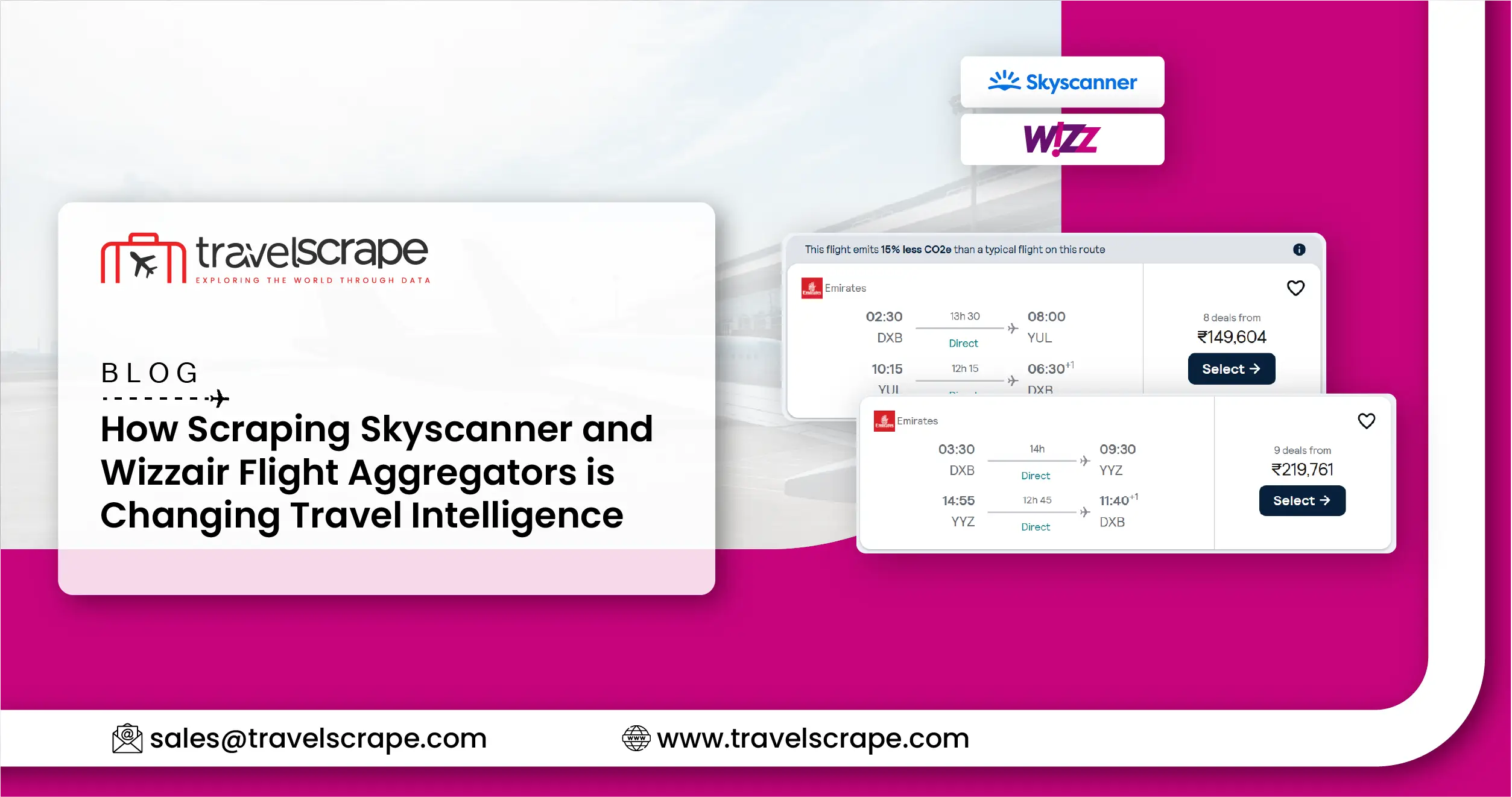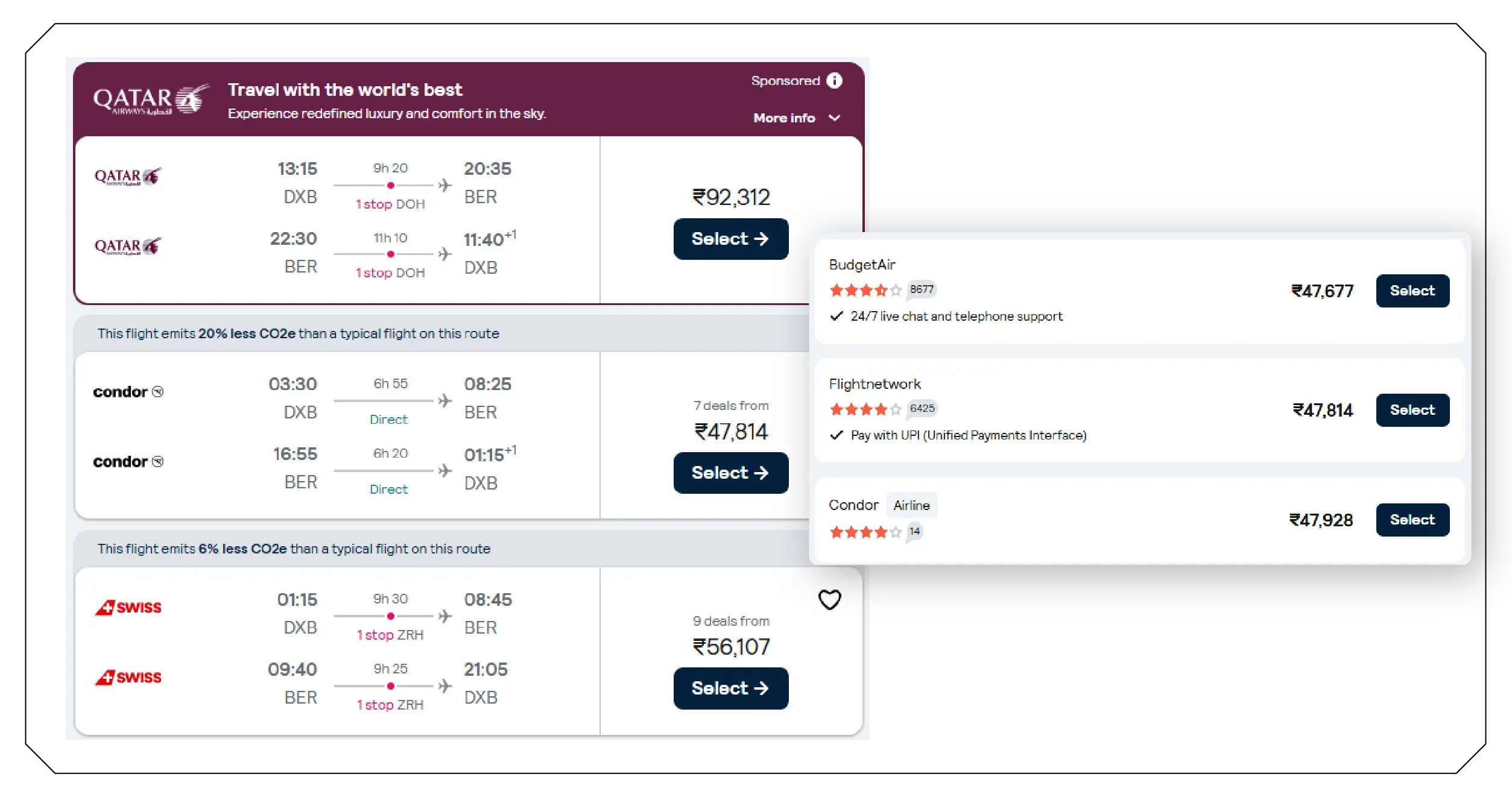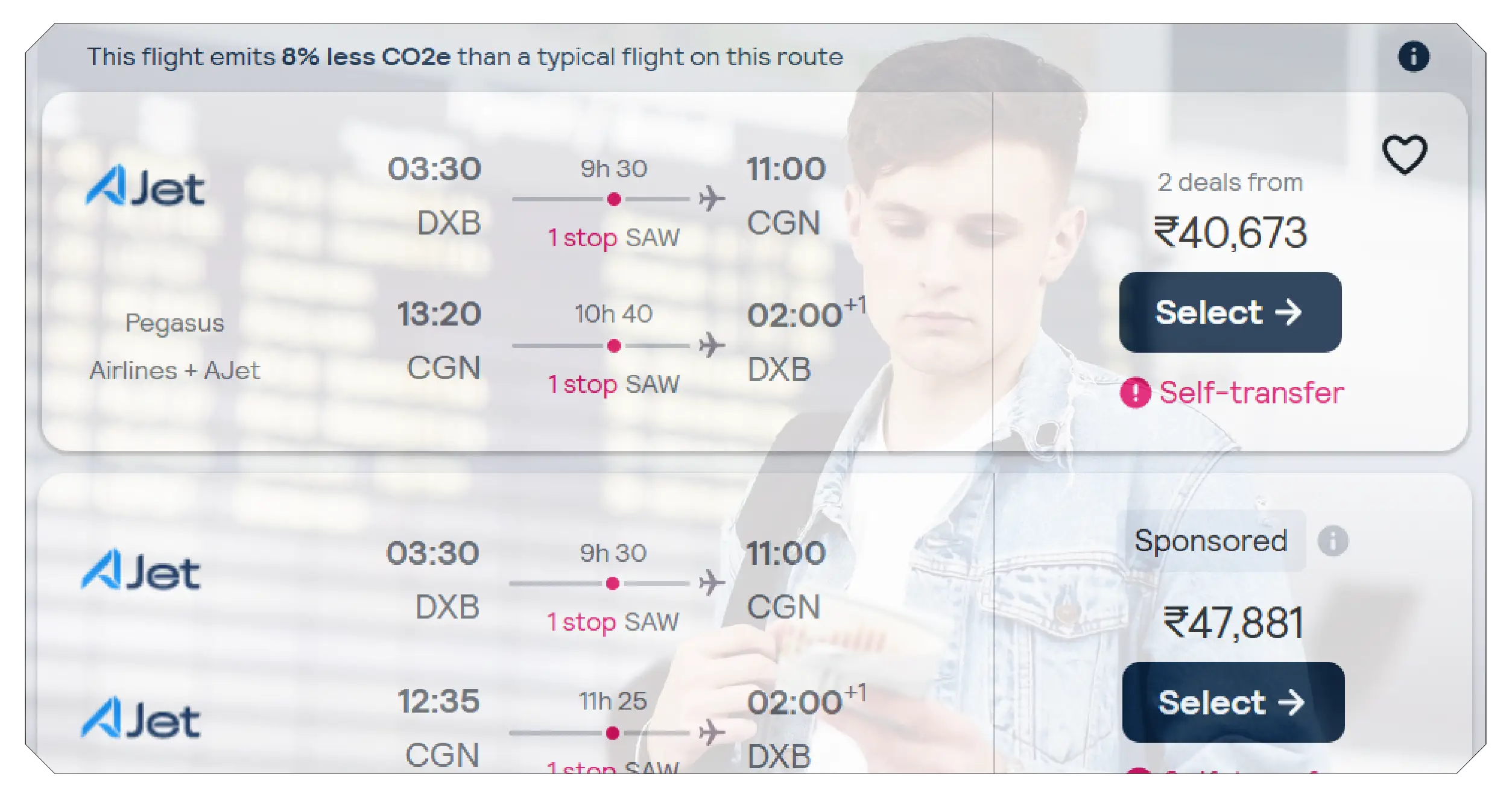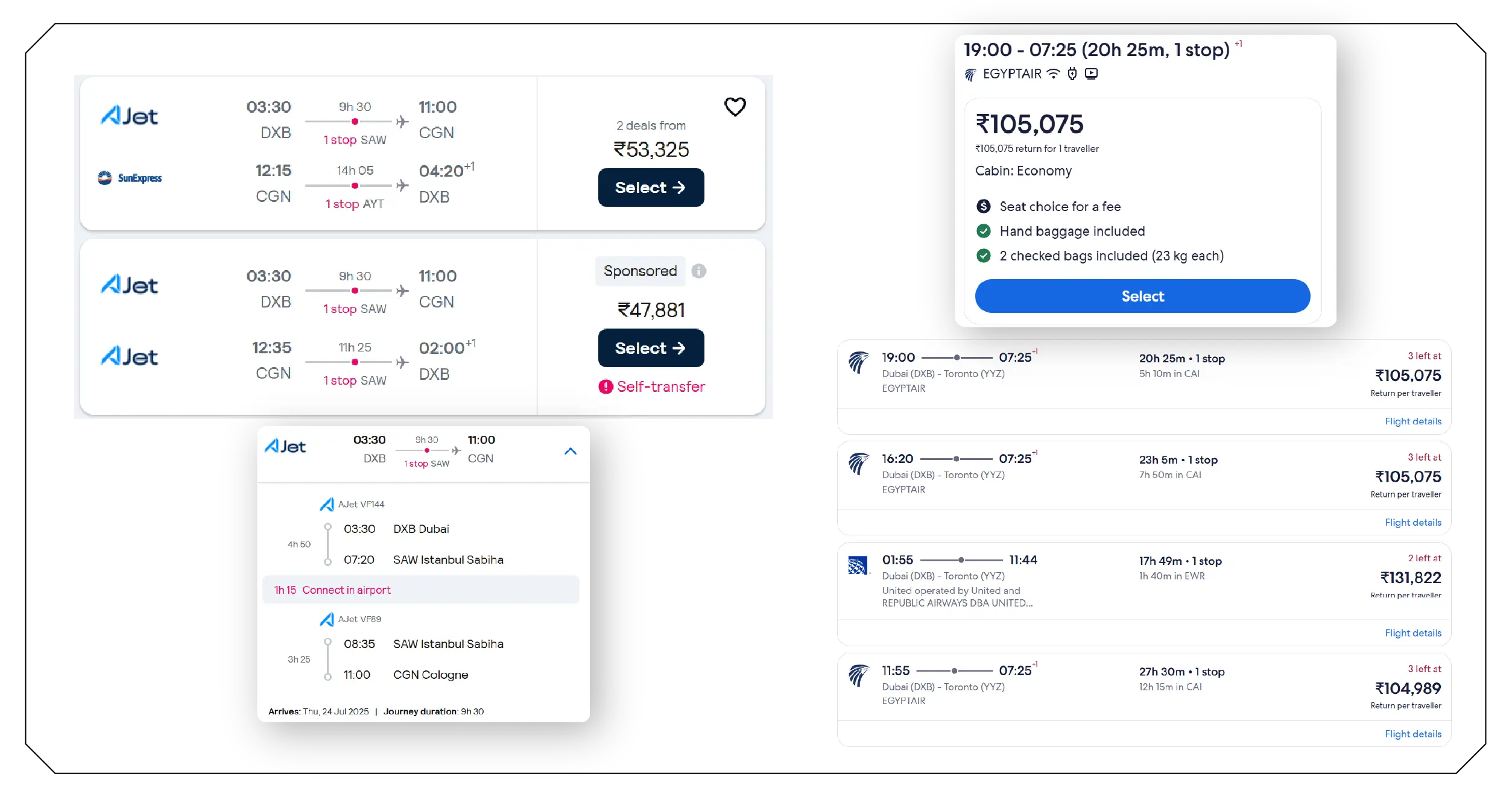How Scraping Skyscanner and Wizzair Flight Aggregators is Changing Travel Intelligence

Introduction
The travel industry is undergoing a digital revolution, where pricing transparency and real-time data access are no longer optional—they're essential. As travelers increasingly rely on flight comparison tools to make informed decisions, platforms like Skyscanner and Wizzair have become indispensable. Businesses aiming for data-driven strategies are now investing in Scraping Skyscanner and Wizzair Flight Aggregators to gain a competitive edge in pricing, trend analysis, and route optimization.
For many companies, the goal is to scrape Skyscanner flight data to access dynamic, global flight listings. This helps build more innovative booking tools, monitor airline behavior, and offer customers better recommendations.
Another crucial use case is to scrape Wizzair airfare , enabling businesses to extract real-time pricing data from a wide range of airlines and OTAs. The result? High-value insights into fare patterns, deal windows, and route performance.
The Role of Aggregators in Modern Travel Data Strategy

Flight aggregators like Skyscanner and Wizzair are not ticket sellers. They pull pricing data from multiple sources—airlines, OTAs (Online Travel Agencies), and booking platforms—to help users compare options in one place. For analysts and travel platforms, this is a goldmine for flight aggregator scraping.
Flight aggregators provide unified visibility across global markets, highlighting route availability, lowest prices, fare categories, and multi-airline combinations. Businesses can use this data to build competitive pricing models or identify underserved regions.
By performing OTA fare data extraction, businesses also gain access to ancillary information, like baggage fees, refund policies, and seating upgrades. This enriches the consumer experience and helps brands build better comparison engines.
Why Businesses Depend on Aggregator Data?
In a world driven by speed and personalization, travel platforms need to react instantly to pricing shifts, promotions, and demand changes. That's why many now rely on Travel Aggregators as a core data source.
These platforms offer a structured view of air travel inventory across regions, airlines, and periods. Scraping them reveals insights that go far beyond basic price tags. With consistent Airlines Data Scraping, companies can monitor the release of new routes, seasonal changes in fare structures, and even strategic pricing moves by competing carriers.
This intelligence is the backbone of modern Flight Price Data Intelligence—used by mobile apps, corporate travel dashboards, and analytics platforms to fine-tune customer offerings.
Applications of Aggregator Data in Real-Time Environments

Flight pricing is highly dynamic. Prices change based on time of day, booking window, demand spikes, seat class, and promotional campaigns. To manage this volatility, companies need Real-Time Flight Price tracking mechanisms.
By integrating scraping tools, businesses can detect fare drops, last-minute deals, and peak-season hikes, allowing them to push relevant offers to users or dynamically adjust their rates. A travel platform using a Travel Scraping API can set up hourly or daily scraping routines, ensuring its pricing databases are always current.
For companies seeking more control than what official APIs allow, many opt for a Skyscanner API alternative. Web scraping enables them to access a broader range of data fields and schedule updates on their terms, without rate-limiting restrictions.
Multi-Platform Price Monitoring for Better Decisions
One of the significant benefits of scraping is the ability to extract multi-site flight prices. This is critical for travel companies comparing fares across platforms like Skyscanner, Wizzair, Google Flights, and airline websites.
By gathering data from multiple sources, businesses can detect pricing discrepancies, confirm the lowest available rates, and ensure users are seeing the most accurate information. A well-built travel metasearch scraper consolidates this information into a single dataset that can power price comparison tools or recommendation engines.
This approach enables better marketing, optimized ad targeting, and seamless customer experiences.
Using Aggregator Data to Analyze Market Trends
Flight aggregators provide not just real-time fare data but also a historical view of pricing patterns. With regular scraping, companies can set up aggregator price monitoring systems to identify long-term trends, such as pricing dips for shoulder-season travel or repeated fare spikes during holidays.
Understanding Wizzair fare trends, for example, helps in planning marketing campaigns, deciding launch dates for promotions, or timing budget travel suggestions. Businesses that map this data to consumer search behavior can further refine their targeting and increase conversions.
Competitive Airline Comparison with Live Scraping

Beyond pricing, travelers want to compare airlines based on duration, comfort, fees, and routing. That's where airline comparison scraping plays a crucial role.
Companies use this data to build comparison tables, showing users exactly what each airline offers for the same route—total travel time, layover location, meals included, and even seat width. When you scrape flight meta engines, you gain the flexibility to present these comparisons in your format, tailored to your platform's UX.
This data-driven approach leads to higher engagement and a better-informed customer base.
From Search Engines to Strategic Insights
Platforms like Skyscanner and Wizzair function as powerful travel search engine scraper sources. These engines not only provide flight listings but also showcase flexible date tools, price alerts, and multi-airline journeys.
Scraping their interfaces allows businesses to collect structured data on alternate travel dates, new route launches, and region-specific fare differences. This insight can be used to refine SEO strategies, suggest alternate itineraries, or build better calendar-based search tools.
Long-Term Benefits and Business Impact
The benefits of scraping flight aggregators go far beyond short-term price tracking. Through consistent real-time aggregator scraping, businesses can build historical fare datasets, generate predictive models, and create dynamic fare alerts that respond to market movements. One core benefit is dynamic fare comparison—the ability to show users not just the lowest fare, but also the best value fare considering amenities, baggage, and travel time. All of this is powered by meta travel data scraping, which combines data from multiple aggregators into a single, actionable source. The result? Faster decision-making, more compelling product offerings, and a data infrastructure built for scale.
How Travel Scrape Can Help You?
-
Customized Aggregator Scraping Tools
We build tailored scrapers for platforms like Skyscanner and Wizzair, capturing real-time flight prices, routes, layovers, and airline options. -
Multi-Source Data Integration
Our system extracts and merges data from multiple sources (airlines, OTAs, and metasearch engines) to provide a unified, clean dataset. -
Scheduled and Real-Time Data Delivery
Get flight data updates hourly, daily, or in real time through APIs or downloadable formats like CSV and JSON. -
Scalable Infrastructure
Whether you're tracking 100 or 100,000 routes, our scraping architecture scales effortlessly to meet growing data demands. -
Compliance and Quality Assurance
We ensure high data accuracy with validation checks and follow ethical scraping practices to align with aggregator terms and data privacy standards.
Final Thoughts
Scraping major flight aggregators like Skyscanner and Wizzair has become a vital part of modern travel intelligence strategies. From enhancing customer experience to refining internal pricing logic, the value of accurate, real-time flight data is undeniable.
Travel Aggregators that invest in these capabilities today are better positioned to adapt to tomorrow's travel trends—whether it's post-pandemic recovery, the rise of AI-powered trip planners, or the expansion of regional air routes.
If your organization is looking to strengthen its pricing intelligence, build travel forecasting models, or deliver better booking experiences, scraping aggregator data is the first—and most important—step toward success.
Ready to elevate your travel business with cutting-edge data insights? Get in touch with Travel Scrape today to explore how our end-to-end data solutions can uncover new revenue streams, enhance your offerings, and strengthen your competitive edge in the travel market.
.webp)
.webp)